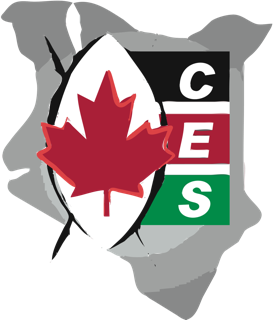We’re 20 years old! Learn about the origins of CES
The book “Under the Acacia Tree,” about the first 15 years of CES, is available from the CES website.
CES started supporting Kenyan young people in 2004, so it’s now 20 years. That’s quite an accomplishment – many organizations of this type don’t make it past about five years. One of the reasons for the longevity of CES is the Patron of CES Kenya, Malik Khaemba, who has provided selfless dedication and leadership the past two decades. Here’s the story, in Malik’s own words, from an interview in 2018.
This is excerpted from the book, “Under the Acacia Tree,” which documents the story of CES, in many cases in the words of the people involved. You can order your copy through the CES website.
From An interview with Malik Khaemba in 2018
CES stands for Community Education Services – the idea came up when I was about to retire in 2003. After working for almost thirty-one years in the public diplomatic service, it was in my mind that I wanted to give back to the community. I began to realize that I didn't want to go back home just to sit. I had gained a lot from the community and I needed to pay back. As the idea matured, I contacted my friends back home, people I grew up with. The concept was there before the name CES came to be. Consulting with my friends Ben and Hillary, I asked, “What can we do to pay or plough back to the community?”
Around that time, I met my friend Michael Frederiksen, currently the president of CES Canada. We met by chance at a fundraising event in Toronto, Canada. I shared with him this idea, which he picked up very quickly. Since I was not yet off duty and fully retired, we decided Michael should come to Kenya and meet my friends. Within a few months he arrived in Kakamega and it was agreed that our new initiative would be to support the community through education.
By the time Michael came back after three months in Kenya, we were already working on the document, describing the organization we wanted to build. We decided on the name, ‘Community Education Services’. We were going to focus on serving the community from which we grew up.
By 2004 the program had already started. Organizing a ‘harambee’ in Toronto, we raised enough funds for twelve scholarships. We agreed we were going to support the disadvantaged children in the community, meaning those children who had lost their parents. They were bright enough but did not have the funds to attend school.
The main thing we were focusing on was supporting those children affected and orphaned by HIV/AIDS. In 2004 we had twelve schools and twenty-four students to support. By the time I returned to Kenya in 2005 we had increased the number of schools to twenty-four, with two students on scholarship in each location. Forty-eight students, and now we had to find the resources to sponsor them. We had always made a promise that once brought into the program, that CES would support them until the completion of their secondary studies. We decided to concentrate on secondary school students because there were no other organizations in the county doing that.
Many elementary school graduates achieve very well; and so they receive a letter that allows them to register at a National secondary school like Alliance High School or Kamusinga High School. These are the big schools within our community; but, due to lack of finances many students are not able to attend. The only option left is a local community school. That is where CES Kenya picks them up for scholarship support.
Now I will explain to you on what basis we select the students who merit to register with the CES scholarship program. There must be a demonstrated financial need; either the parents are absent, or if one is present, there is severe economic hardship. Secondly, the child is bright, obtaining sufficient marks to move forward to high school. Thirdly, we are looking for disciplined students who have strong potential to become high achievers.
As a matter of policy, we agreed not to select the students ourselves. Our strategy was to partner with the principals of the schools; and so, we gave them the criteria to select the students and the numbers based on a limited budget.
Right from the word go, CES Kenya was an organization managed by a board of directors. The board designs the policies on which the program runs. We also have an executive board or secretariat as we like to call it. This is the small group that makes quick decisions, and eventually those decisions are ratified by the board and reflected in the minutes of the meeting. Board Chairman Ben Udoto is a founding member of CES Kenya. Without him CES would not be as efficient as it is. He is very passionate about the program and he has never missed a single sitting as chairman. He has been an excellent manager for CES. Then under him we have Hillary Lukhafwa as secretary who takes the minutes, and Treasurer Ibrahim Efumbi, who takes care of the finances and acts as our accountant.
I, Malik Khaemba, am the Patron. They gave me that title because I started the program and double up as a Chief Executive Officer. I do most of the office communications and correspondence. Supported by Executive Office Manager Sarah Nabongo, together we do most of the administrative work. We have Directors meetings at least four times per year and more as needs arise. I'm proud to say that we have been doing this since 2004. After my retirement I came straight to Kakamega and we put everything in motion. We have never looked back since that time.

